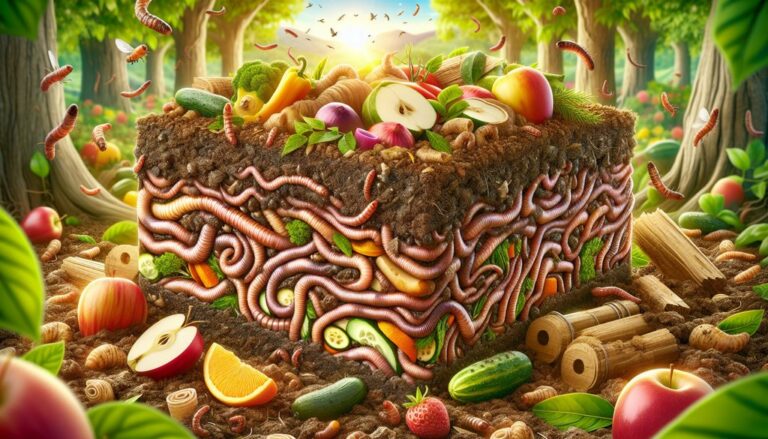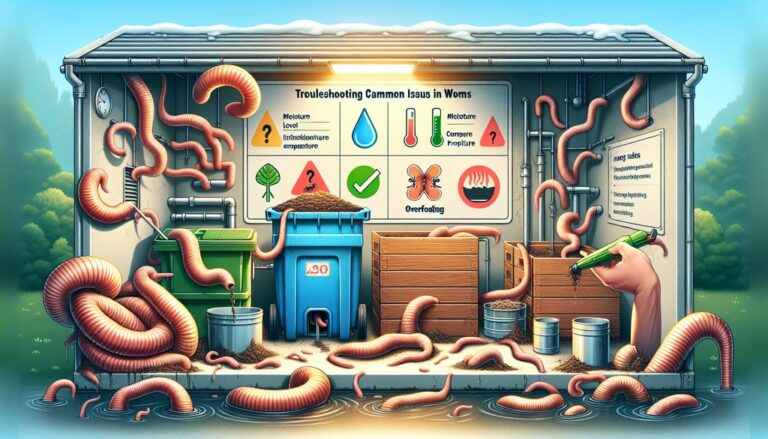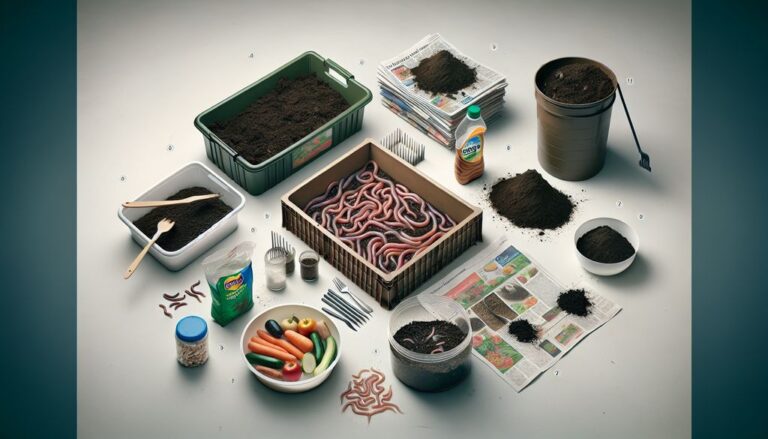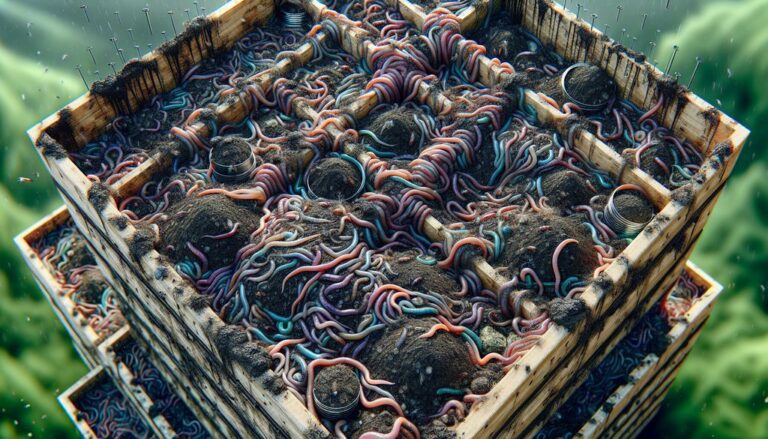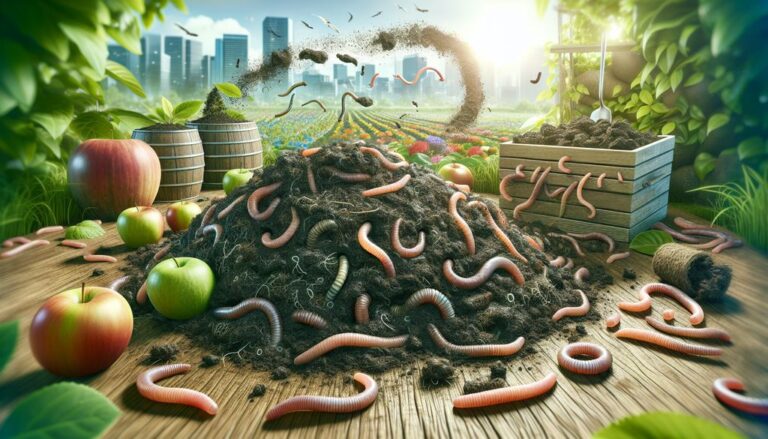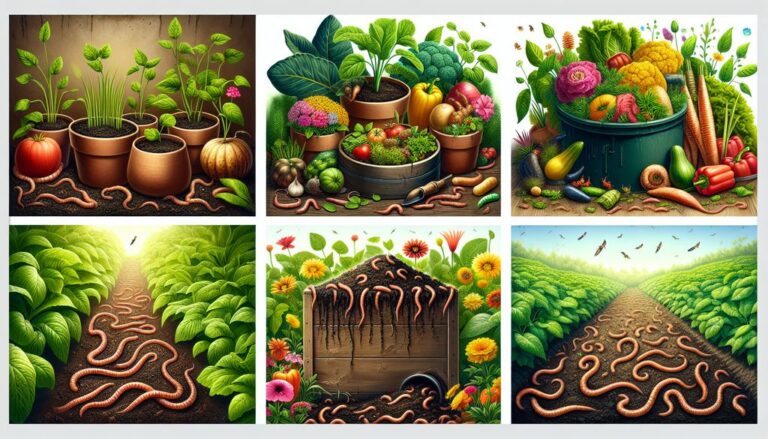Worm composting for kids can be a fun and educational way to learn about these important creatures. In this article, we will explore various activities that engage children in learning about worms, their behavior, and the benefits of worm composting. By participating in these activities, kids can gain a deeper understanding of the natural world and the role of worms in the ecosystem.
Key Takeaways
- Worm composting activities can be both fun and educational for kids.
- Observing worm behavior in their natural habitat provides valuable insights into their role in the ecosystem.
- Creating a worm compost bin teaches kids about the benefits of composting and sustainability.
- Engaging in worm races can be an exciting way for kids to learn about worm behavior and characteristics.
- Using worms to create artwork encourages creativity and a unique approach to art.
Worm Anatomy Lesson
Learn about the different parts of a worm and their functions
Worms are fascinating creatures, and understanding their anatomy is key to learning how they live and thrive in their environments. Worms do not have a skeleton or arms and legs, but they have several important parts that help them move, eat, and sense the world around them.
- Segmented Body: Worms have a long, tube-like body divided into segments. Each segment can expand and contract, which helps the worm to move through soil.
- Mouth: Located at the front end of the worm, the mouth is used for eating organic material, which later becomes compost.
- Setae: Tiny bristles called setae are found on each segment. These help the worm grip the soil as it moves.
- Anus: At the rear end, the worm has an anus where waste is expelled after digestion.
Worms breathe through their skin, which must stay moist for them to absorb oxygen. This is why they often come to the surface when it rains.
By exploring the different parts of a worm, kids can gain a deeper appreciation for these small but mighty earth movers. Remember, worms are delicate, so handle them with care!
Observing Worm Behavior
Observe worms in their natural habitat and record their behavior
Observing worms as they go about their daily lives is not only fascinating but also a great way to learn about their behavior and preferences. Start by creating a comfortable habitat for the worms using soil, twigs, and leaves, mimicking their natural environment as closely as possible. This will encourage the worms to behave as they would in the wild, making your observations more authentic.
When observing, take note of how the worms move, what they eat, and how they interact with their environment. This hands-on experience is invaluable for understanding the important role worms play in our ecosystem.
Here are some behaviors you might want to record:
- The movement patterns of the worms
- Their reactions to different types of food
- How they respond to light and touch
- The way they burrow and create tunnels in the soil
Remember to handle the worms gently and return them to their habitat after your observations. By studying these incredible creatures, kids can develop a deeper appreciation for the complexity of life and the importance of all organisms in nature.
Worm Composting
Learn about the benefits of worm composting and create a worm compost bin
Worm composting, or vermicomposting, is a fantastic way to recycle kitchen scraps into nutrient-rich soil for your garden. Worms work like tiny, efficient composting machines, breaking down organic waste and producing worm castings, which are excellent for plant growth.
To create your own worm compost bin, you’ll need a few simple materials:
- A plastic bin or container
- Shredded newspaper or cardboard
- Organic soil
- Red wiggler worms
- Kitchen scraps
Setting up your worm compost bin is an easy and rewarding activity. It’s a hands-on way to learn about sustainability and the role worms play in our ecosystem.
Here’s a quick guide to get you started:
- Drill 10 to 15 holes in the bottom of your bin for drainage.
- Layer the bottom with shredded newspaper or cardboard.
- Add a layer of organic soil.
- Introduce red wiggler worms to the bin.
- Top with kitchen scraps and cover with more bedding material.
Remember to keep your bin in a cool, shaded area and to manage the moisture level to keep your worms happy and healthy. Vermicomposting is not only beneficial for your plants but also reduces waste, making it a win-win for the environment and your garden!
Worm Races
Race worms to determine the fastest ones
Worm races are a delightful way to engage kids in learning about worm mobility and behavior. Set up a simple race track on a flat surface and let the children place their worms at the starting line. It’s important to keep the surface moist, as worms need moisture to move comfortably. Here’s how to conduct a worm race:
- Prepare the track: Use a piece of cardboard or a flat tray lined with moist soil or wet paper towels.
- Select the racers: Each child can choose a worm, preferably of similar size, to be their racer.
- Mark the start and finish lines: You can use string or tape to define the boundaries.
- Start the race: On ‘go’, place the worms at the start line and watch them wriggle towards the finish.
- Observe and cheer: Encourage the children to cheer for their worms but remind them not to touch the worms during the race.
Remember, the goal of the activity is not just to find the fastest worm, but to observe how worms move and to learn about their behavior in a fun setting.
After the race, discuss with the children what they noticed about the worm’s movement. Did they go straight or did they curve? How did they react to the moisture? This activity is not only entertaining but also a great opportunity for kids to learn about the biology of worms in a hands-on way.
Worm Art
Create artwork using worms as ‘paintbrushes’
Worm art is a unique and engaging way for kids to learn about the natural movements of worms while tapping into their creative side. Using worms as ‘paintbrushes’ is not only fun but also a safe and educational activity that can be done with common household items.
To get started, you’ll need a shallow tray, non-toxic paint, and a piece of paper. Place the paper in the tray, add a few dollops of paint, and gently place the worms on the paper. As the worms move, they will create interesting patterns and designs. Remember to handle the worms with care and return them to their habitat after the activity.
This activity not only fosters creativity but also provides a hands-on experience with live creatures, helping kids understand the concept of respect for living things.
Here’s a simple list of materials you’ll need:
- Shallow tray or container
- Non-toxic paint
- Paper
- Worms (ensure they are safe to handle)
After the artwork is complete, discuss with the children what they observed about the worm’s movement and how it translated into art. This can lead to a deeper conversation about the role of worms in the ecosystem and the importance of all creatures, no matter how small.
Conclusion
In conclusion, worm composting for kids can be a fun and educational way to learn about these important creatures. From learning about worm anatomy to observing worm behavior and creating worm art, there are numerous engaging activities that can be incorporated into the classroom or at home. By teaching kids about the benefits of worm composting and the role of earthworms in the environment, we can inspire a sense of curiosity and appreciation for nature. Through hands-on activities and interactive learning, children can gain a deeper understanding of the natural world and the impact of these fascinating creatures. Worm composting is not only a valuable educational experience but also a practical way to reduce waste and improve soil quality. So, let’s get started and explore the wonderful world of worm composting with kids!
Frequently Asked Questions
What is worm composting?
Worm composting, also known as vermicomposting, is the process of using worms to decompose organic food waste into nutrient-rich compost for plants.
How do worms contribute to soil health?
Worms contribute to soil health by aerating the soil, breaking down organic matter, and enriching the soil with their castings, which are nutrient-rich waste products.
Are worm races harmful to worms?
No, worm races are not harmful to worms as long as they are conducted in a safe and controlled environment and the worms are handled with care.
What materials are needed to create a worm compost bin?
To create a worm compost bin, you will need a large plastic container, shredded newspaper, organic soil, and redworms.
Can kids safely handle worms?
Yes, kids can safely handle worms as long as they wash their hands afterward and handle the worms with care and respect.
What are the benefits of worm composting?
The benefits of worm composting include reducing waste, improving soil quality, and producing nutrient-rich compost for plants.

